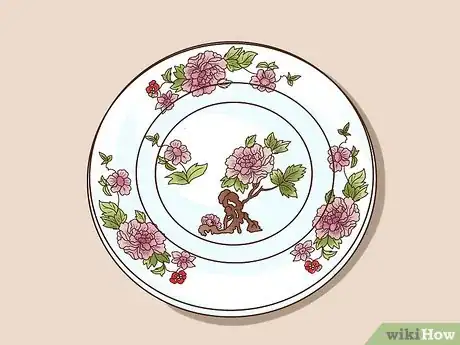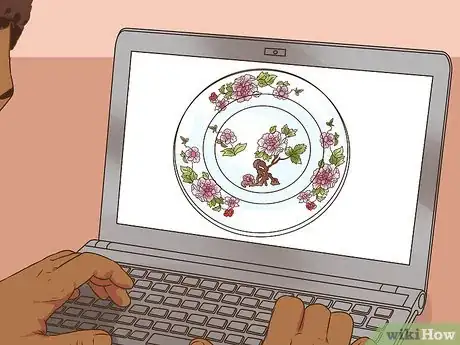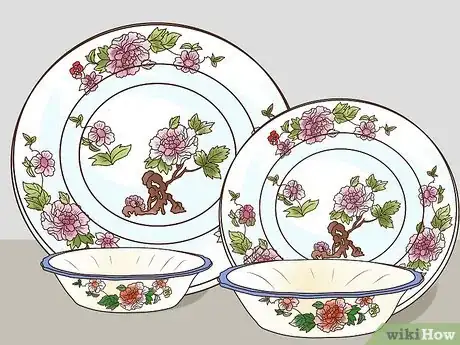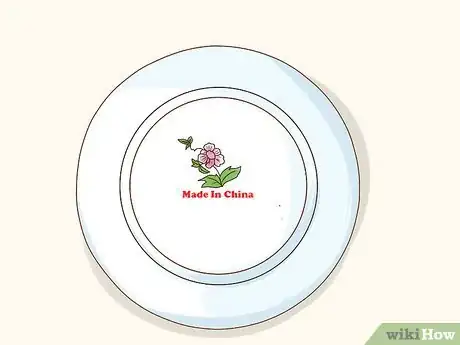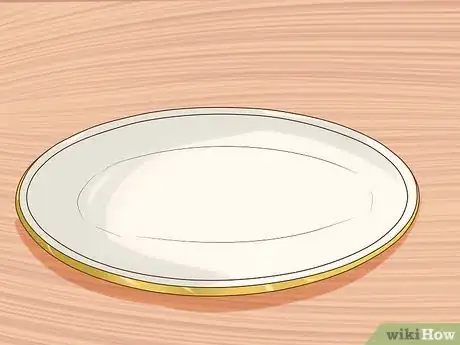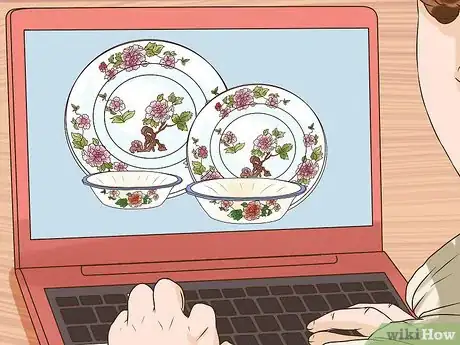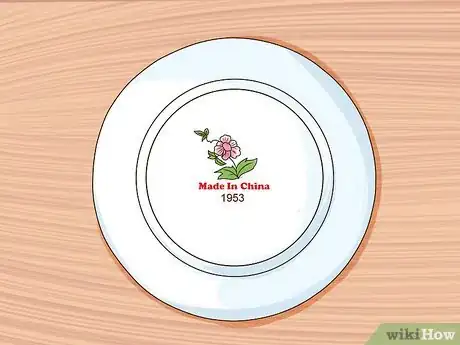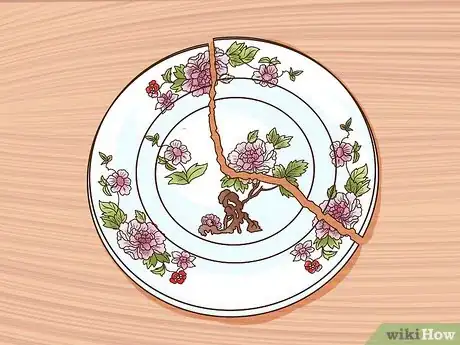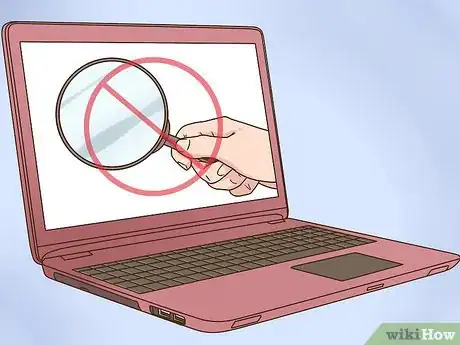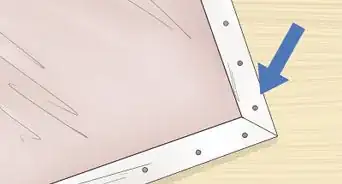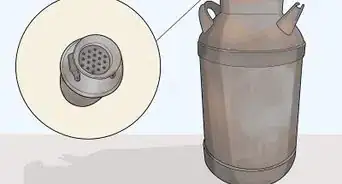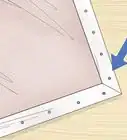This article was co-authored by wikiHow Staff. Our trained team of editors and researchers validate articles for accuracy and comprehensiveness. wikiHow's Content Management Team carefully monitors the work from our editorial staff to ensure that each article is backed by trusted research and meets our high quality standards.
This article has been viewed 377,207 times.
Learn more...
Although it'll likely take an expert to appraise the value of your dinnerware, you can often determine whether or not something is an antique by investigating it for identifying marks and features. Dinnerware is a loose term for serving pieces, and can include dinner plates, salad plates, dessert plates, cups, saucers, and more. Whether you inherited the dinnerware in question from a family member or purchased it from an antique store or a yard sale, it's time to put on your detective hat to figure out if your dinnerware is truly antique or only looks that way.
Steps
Inspecting for Antiques
-
1Examine your dinnerware for the characteristics of china. Antique china will have certain qualities that distinguish it from other kinds of dinnerware. The two main factors that you'll be looking for include shape/design and the pattern on the china. These factors will change depending on the period in which they were produced.
- Prior to the 1950s, most china plates were round, with the exception of some art deco pieces in the 1920s.
- Generally, china will either have rimmed or coupe plates. Rim plate china contains a second circle indented inside the plate, while coupe plates are all one diameter in shape.[1]
-
2Compare the patterns on your china with online examples. This can be especially helpful when you do not know the manufacturer of your china, as many patterns are unique to certain producers. You'll want to make sure the unique features, like corner-work and artistic flourishes, are the same between patterns.
- Two examples of specialty company designs include Haviland, which was known for china with soft floral displays, and Wedgwood, which themed china patterns off portraits or classical Greek scenes.[2]
Advertisement -
3Look for consistency and evaluate quality in sets. A complete set is often worth more than a single piece. However, different pieces that have similar patterns can often be mistaken as part of a set. Most sets are usually consistent throughout, including similar borders, corner-work, shape, and pattern.
- While checking for consistency, you'll have a perfect chance to scope out the quality as well. An ideal set will be consistent in both pattern and color.
- The glaze and construction are also a good way of determining quality. Glaze should not be bubbled or cracked, and the pieces should be completely level so that they don't wobble when laid on the table.[3]
-
4Look for a back stamp or marker stamp. This is the easiest way to identify the manufacturer of your dinnerware, although in many cases the stamps may have faded or become illegible.[4] Once you know the manufacturer, you can look up the approximate value of the piece online.
- The back/marker stamp is usually found on the bottom of the dinnerware. Look for a marking that is painted, impressed, or stamped on the piece.
- Back/marker stamps can be very small, but these usually include an emblem of some sort, the name of the manufacturer, and possibly numbers indicating the class or date of the piece.
- A good way of finding the approximate value of your piece is to search for an identical or nearly identical piece on an online auction to see its going value. However, this approximation may vary greatly from that of a professional appraiser.
- If you find that your dinnerware is valuable, you might want to take it to a professional appraiser so you can determine the precise value.
- If the stamp on the back of your dinnerware is illegible, you can compare its markings with more visible ones on similar dinnerware in an antique catalog at your local library or an electronic directory online.
-
5Use historical trends to your advantage. Certain designs were more popular than others historically. For example, dinnerware from 1900 - 1920 frequently had floral patterns featuring violets, pastel colors, and were rimmed with a shaped edge. Other trends that might help you identify antique dinnerware include:
- Designs from 1920 - 1940, which often featured bright colors and geometric shapes. Pastel colors were still somewhat popular at this time, as well as ivory or cream white pieces with gold or silver gilding.
- Designs from 1940 - 1950, which leaned more heavily on bold colors like red, blue, and green. Pastels were rare during this period. The shape most popular in this era was rimless and streamlined.
- Designs from 1950 - 1970 rarely had gold trim, as the recent invention of the microwave made this impractical. Pastels returned to popularity, but were more muted than the dinnerware of the past.[5]
Researching to Learn More
-
1Get your bearings with a brief Internet search. There are many websites that focus on selling or helping to identify replacement pieces for your china sets. You might use these resources to direct your research. These kind of sites often have an alphabetical list of china manufacturers in addition to pictures.
- Online appraisal services are rarely able to accurately gauge the exact worth of your dinnerware.[6] The best use for these online services is to get direction for further research.
-
2Utilize references from a library or bookstore. Digital images can be of low quality or difficult to scrutinize closely, so you may want to visit a library or the antiques/collectibles section of your local book store. Using references at these places, you can compare your dinnerware to other pieces to assist with identification.
- Your local library may have a specific section devoted to arts and collectibles. This may be the best place to start your research.
- If your dinnerware has a specific name stamped on it, such as Limoges or Wedgwood, you'll likely be able to find books about those particular manufacturers.
-
3Establish a likely period in which your dinnerware was produced. Sometimes a piece of dinnerware can appear as though it fits in a few different periods. But once you narrow down your choices to a likely few, you can compare your piece to others in that period. If you notice many similarities, chances are good the piece was produced in that period.
- In some cases, the back/marker stamp on the bottom of your dinnerware may give you the exact date of its production. This can help significantly with your research.[7]
Appraising Your Antique Dinnerware
-
1Maintain the original condition of unappraised items. If you see a small crack or some other kind of deformity in your dinnerware, you might be tempted to do a quick-fix repair or touch up. However, altering the original condition of your dinnerware could actually decrease its value.[8]
- Even if the change you intend on making would normally be considered an improvement, this can result in a lower appraisal than the original.
- Keep any parts, spare pieces, or broken pieces with the original piece. In some cases, you may be advised by your appraiser to have the piece repaired by a professional.
-
2Avoid online appraisers. Getting an item appraised online can be both cheap and time efficient, but the quality and attention to detail you receive will be less than a physical appraisal by a professional. To fully understand the condition of your piece, your appraiser will need to handle it.
- If you're having trouble finding an appraiser or if they are too expensive for your budget, you might inquire with bank Trust managers or Estate Lawyers to find a suitable individual to appraise your dinnerware.
- You should also avoid auction houses and dealers when getting your dinnerware appraised. These people may deflate the value of your piece with hopes of buying it from you cheap.
-
3Hire an appraiser. Appraisers have different areas of expertise, so to get the perfect appraiser for your dinnerware, you might have to interview a few before you find the right one. Inspect potential appraisers' resumes to find how long they've been working with antique dinnerware, and check references to ensure you're not being misled.
- After you've narrowed down the candidates for an appraiser, you should request a written estimate of how much the appraisal will cost and how long it will take.
- Generally, a written report and full appraisal of your dinnerware will take about a month. However, high demand appraisers may need more time.[9]
-
4Get proof of your appraisal. This kind of proof usually takes the form of a written report. The contents of this report normally include the reason for the appraisal, the techniques used to value your dinnerware, a description of the dinnerware, and a precise value of your dinnerware's worth.[10]
-
5Reappraise your items. The value of your dinnerware will change as time passes, so old appraisals may be significantly different from the current value. Additionally, market factors can change the value of your dinnerware. For example, if similar dinnerware has saturated the market, the value of your piece may have decreased.
- In most cases, the written part of your appraisal should indicate the state of the market for your particular kind of dinnerware.[11]
Community Q&A
-
QuestionIf my porcelain pot has an animal face on the bottom, is it valuable?
 Community AnswerIt depends on what kind of animal it is. Try looking the mark up online to see what the mark means first.
Community AnswerIt depends on what kind of animal it is. Try looking the mark up online to see what the mark means first. -
QuestionIs it okay to wrap antique dinnerware in newspaper?
 Community AnswerSo long as your dinnerware is well-padded and placed somewhere that it is not in danger of being tossed around or damaged, newspaper should be fine.
Community AnswerSo long as your dinnerware is well-padded and placed somewhere that it is not in danger of being tossed around or damaged, newspaper should be fine. -
QuestionHow can I find out the worth my my teacups and saucers?
 Community AnswerGo to an antique shop and ask them to price it. They should be able to help you find out.
Community AnswerGo to an antique shop and ask them to price it. They should be able to help you find out.
References
- ↑ http://www.chinafinders.com.au/Histories.asp
- ↑ http://www.chinafinders.com.au/Histories.asp
- ↑ http://www.christies.com/features/Chinese-Ceramics-Collecting-Guide-7224-1.aspx
- ↑ http://antique-marks.com/antique-marks.html
- ↑ http://www.retrowaste.com/how-to-date-antique-vintage-dinnerware/
- ↑ http://money.cnn.com/2002/06/03/pf/yourhome/q_appraise/
- ↑ http://antique-marks.com/antique-marks.html
- ↑ http://money.cnn.com/2002/06/03/pf/yourhome/q_appraise/
- ↑ http://money.cnn.com/2002/06/03/pf/yourhome/q_appraise/
About This Article
To identify antique dinnerware, there are certain patterns and marks to look for. Check the back to see if there's a manufacturer’s stamp, which will tell you who made your piece. Then, search the manufacturer online to find out the value of your piece. However, if there isn't a stamp, there are other ways to identify your dinnerware. For example, China generally has either rimmed or coupe plates. Rimmed plates contain a second circle indented inside the plate, while coupe plates are all one diameter. The glaze shouldn’t be bubbled or cracked, and the pieces shouldn’t wobble when laid on a flat surface. Try searching online for popular china patterns and compare them with your own. This will also help you determine the manufacturer. Also, consider historical trends. From 1920 to 1940, designs often features bright colors and geometric patterns. In the ’40s and ’50s, bold colors like red, blue, and green were popular. From the ’50s to the ’70s, muted pastels were prominent. For more tips, including how to get your antique dinnerware appraised, read on!
